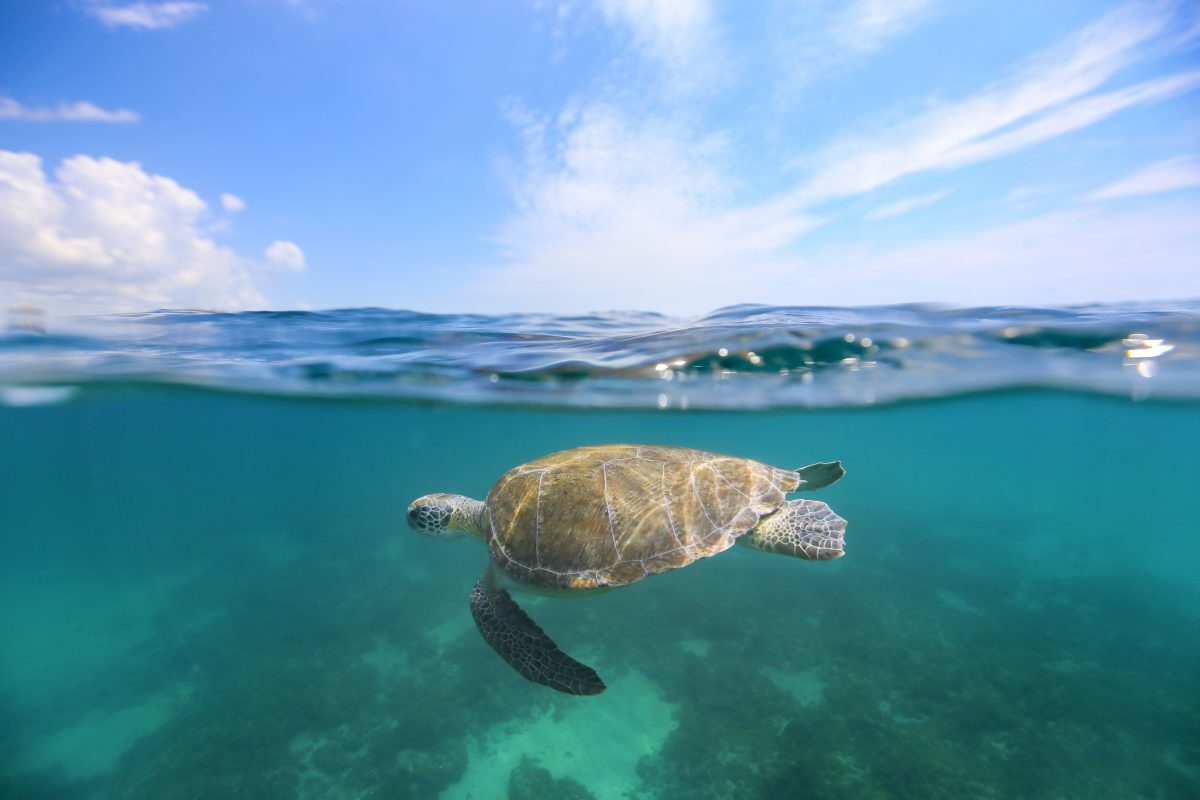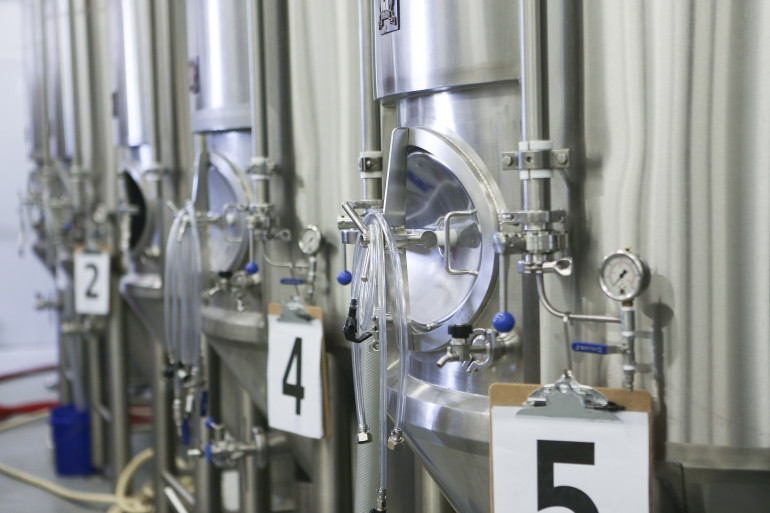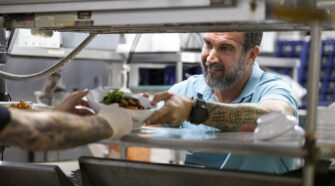It’s All In The Details
by Darien Davies
According to the National Oceanic and Atmospheric Administration, approximately 1.4 billion pounds of trash enters the ocean per year. Guess how it leaves. It floats to our beaches or ends up in the bellies of our favorite reptiles, mammals and fish. Although it may seem like a single person’s efforts will never make a difference, wakey wakey because it totally does. The main take-away from this is that small switches make a great impact when everyone is involved. So, invite your friends to join the “going green” party and live the high life of being Earth’s best friend. Read on, my conservation compadres, because we’re going to be the change we wish to see in the sea.
WHAT CAN WE DO?
SCREEN YOUR SUNSCREEN
Your dip in the ocean has lasting negative effects if you’re not using the right sunscreen. According to the Pacific Whale Foundation, whose mission is to protect our oceans through science and advocacy, researchers have discovered that some chemicals in sunscreen can awaken coral viruses, causing the coral to bleach and die. Bad news.
The National Oceanic and Atmospheric Administration (NOAA) states that coral reefs are some of the most diverse and valuable ecosystems on Earth. They support more species per unit than any other marine environment, including about 4,000 species of sh, 800 species of hard corals, and hundreds of other species. Many drugs are now being developed from coral reef animals and plants as possible cures for cancer, arthritis, human bacterial infections, viruses and other diseases.
They are not only among the most biologically diverse ecosystems in the world, but they are also very fragile. When some pollutants enter the water, nutrient levels can increase, which promotes the rapid growth of algae and other organisms that can smother corals. If we can make a simple switch with our sunscreens to avoid adding to this pollution problem, let’s do it.
Solution: Make the easy switch to reef- safe sunscreen. You can use physical, or mineral, sunscreens that physically block UV rays but don’t contain coral reef-harming chemicals. Definitely avoid Oxybenzone, as this ingredient is a known endocrine disrupter and is proved to damage coral reefs. However, make sure it does include zinc oxide and/or titanium dioxide. The best and most eco-friendly option is to don sun-protective clothing and a hat so you can avoid sunscreen all together.
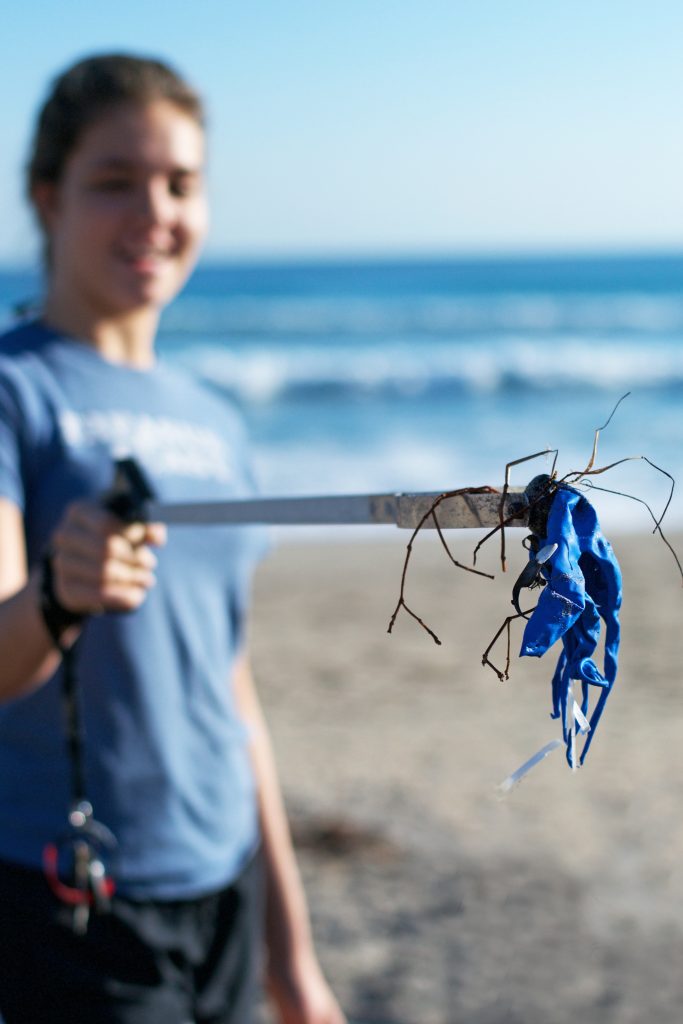
JOIN BEACH CLEANUPS
The beach is the best part of Florida, so we should focus on keeping it clean. Not only are there local, event-specific beach cleanups (i.e. July 5 in several cities), but the Loggerhead Marinelife Center (LMC) in Juno Beach, FL hosts monthly beach cleanups where they focus on the dirty details.
“We started weighing the trash intentionally at the end of each cleanup and focused on sorting the trash into categories,” said Hannah Deadman, public relation and communications coordinator at the LMC. “We were really able to see what trash there is, and how much of each type, so we can focus on how to stop that trash from ending up in our oceans.”
For the reader, this means to just be smart about what you’re leaving behind. Whether you’re a Girl Scout or not, you must abide by the leave-the-place-cleaner-than-you-found-it decree. If you brought it out, bring it back in. There are sea turtles that are counting on it.
“Doing the sorting and nding the source of plastic over time, to see what is increasing, decreasing and where it’s coming from,” said Demi Fox, LMC conservation coordinator, “will help to nd a solution for the end goal.”
The LMC goes even the nautical mile further and hosts underwater beach cleanups. Their conservation team is able to clean under the pier and remove items such as shing line, sunglasses, random debris and more. Since they began this initiative a few years ago, they’ve removed more than 8,000 pounds of debris just from the Juno Beach Pier.
Solution: Stop littering, you filthy animals. If it didn’t come out of the ocean, it doesn’t need
to go in the ocean. Keep Palm Beach County Beautiful, the local non-profit affiliate of Keep America Beautiful, makes it easy for you to find a beach cleanup near you. Just visit www. keeppbcbeautiful.org/monthly.htm, get a group of friends together, and hit the beach. They invite you to “clean it up, x it up, keep it up” so as to inspire generations of environmental stewards for years to come.
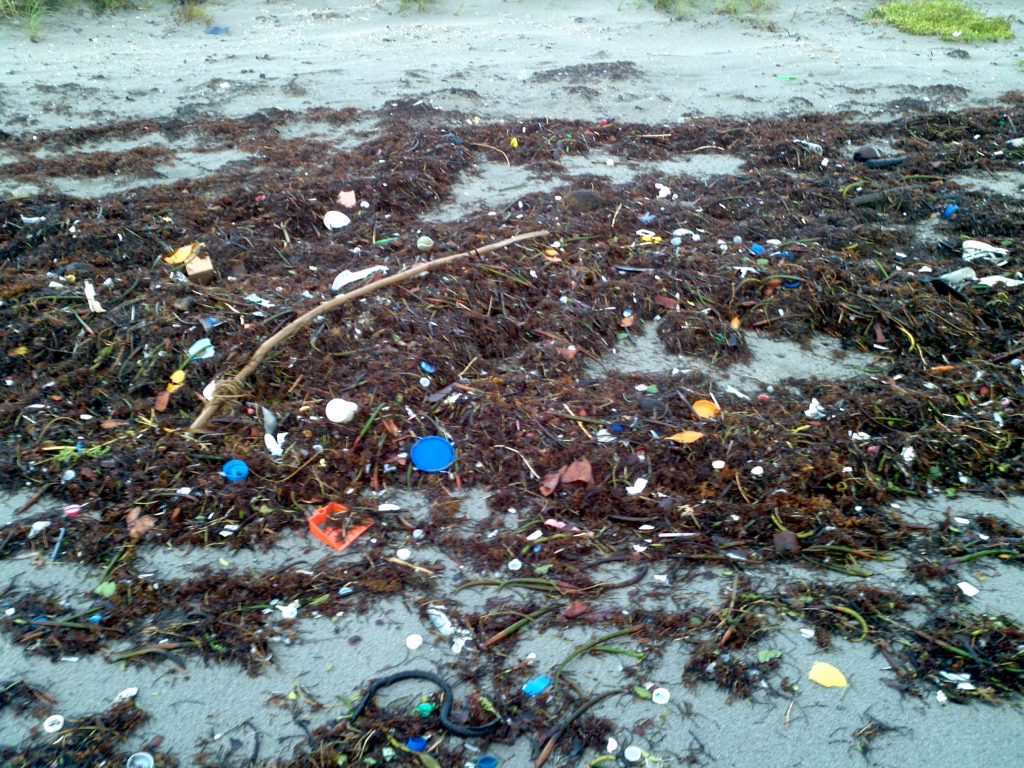
SAY NO TO TOXIC PLASTIC POLLUTION
According to a World Economic Forum study, there will be more plastic than sh in the world’s oceans by 2050. SAY WHAT?
According to the Surfrider Foundation, plastics comprise up to 90 percent of floating marine debris, and up to 80 percent of the plastic in our oceans comes from land-based sources.
“Only about 4 percent of single-use plastic bags are recycled,” said Tom Warnke, the stakeholder liaison for the Surfrider Foundation Palm Beach County chapter. The Surfrider Foundation is dedicated to the protection
and enjoyment of the world’s ocean, waves and beaches through a powerful activist network. Warnke founded the Palm Beach County chapter 20 years ago, and it was the Foundation’s first Florida chapter.
When California enacted a state-wide plastic bag ban in 2015, Florida had already taken the opposite stance in 2008 and passed a bill prohibiting local governments from banning plastic bags. But, local municipalities are still working to ban plastic bags.
Palm Beach County recently joined the “Ban the Bag” efforts by supporting plastic bag bans in stores and restaurants. The campaign is designed to help citizens, shopkeepers and local authorities to take action to phase out single-use plastic bags.
“We’ve been encouraging Palm Beach County municipalities to ask the state legislature to do away with the ban (the one prohibiting local governments from banning plastic bags) and support the bill that Surfrider has been working so hard to get passed,” Warnke said.
Coral Gables became the first city in Florida to ban single-use plastic bags, which took place a mere six months ago. However, the state may or may not be challenging this in court.
“The bill will be reintroduced in January and, as a pilot program, will make it allowable for municipalities with less than 100,000 people to regulate single-use plastic bags and report to the legislature on the results,” Warnke said. “In a few years, the legislature would have the necessary data to end the ban.”
The Ban the Bag initiative is so important because it greatly affects loggerhead sea turtles. These sea turtles are a really good, and important, indicator species that signifies what is happening as far as overall marine pollution impact.
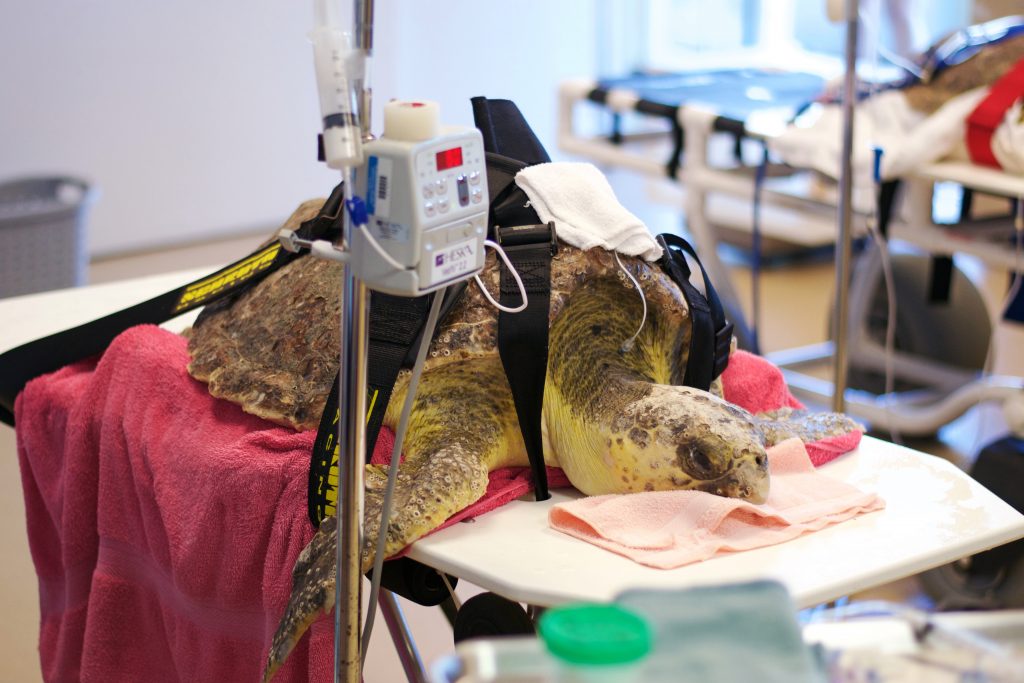
“They eat the bags because they look like jellyfish, and end up not being able to breathe and die,” Warnke said.
In addition to fighting against the bill, Surfrider is also promoting their Rise Above Plastics campaign and encouraging local restaurants to qualify as ocean friendly restaurants. The qualifications are easy to do, i.e. using green to-go products, but make a large impact when more restaurants get involved.
“This initiative is based on the Surfrider program in Maui. All we have to do is plug
in our local restaurants,” Warnke said. “The restaurants can list on their menu that they’re an ocean friendly restaurant, which will help to educate the public.”
You can also reeducate yourself on the three R’s: reduce, reuse, recycle. It’s a fabulous mantra, but the most important factor of the trifecta is the “reduce.” According to a 2013 Environmental Protection Agency (EPA) study, Americans generate roughly 4.4 pounds of waste per day.
“Reducing is always the rst goal. Then you reuse and recycle. Recycling still adds to
the issue, so it’s best to step back and rst reduce,” Deadman said. “People shouldn’t be a 100 percent zero waste, it’s just important to take the small steps toward a more sustainable life. If you touch a piece of plastic for less
than 30 minutes, there are solutions to that.” The goal is to just be conscious, caring and considerate of animals who don’t speak our language.
Solution: Basically, cut down on your plastic usage. If you don’t have a Hydro Flask or similar reusable water bottle, invest in one. To become part of the Ban the Bag movement, visit orida.surfrider.org where you can not
only engage your shopkeeper to stop using plastic bags, but also involve your city in the ght against plastic pollution. If you have an idea for a restaurant that might be on board
to be an ocean friendly restaurant, email Anna from Surfrider at [email protected] for details. Small changes equal a big impact.
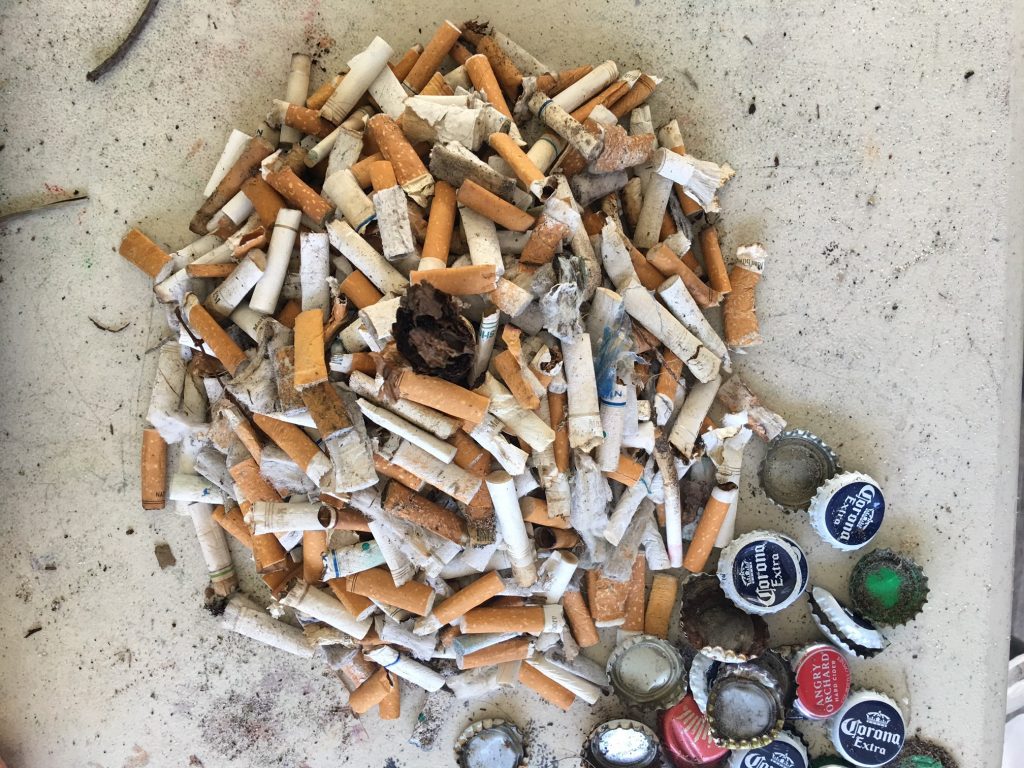
NO BUTTS ABOUT IT
According to Ocean Conservancy, a non-pro t environmental advocacy group that helps protect ocean wildlife, cigarette butts are one of the top 5 deadliest ocean trash. Other items on the list include fishing gear, plastic bags and utensils, balloons and bottle caps.
“A lot of people don’t realize that cigarette butts aren’t biodegradable,” Fox said. “The filter is in the butts, and the filter is made out of plastic, which only degrades and breaks into small particles over time, getting into our oceans.”
The LMC received a Cigarette Litter Prevention Program Grant from Keep America Beautiful,
a national non-pro t that envisions a country
in which every community is a clean, green and beautiful place to live, to combat cigarette litter on more than 50 fishing piers by installing cigarette receptacles.
The Cigarette Litter Prevention Program is the nation’s largest program aimed at reducing cigarette litter. Communities that implemented the Cigarette Litter Prevention Program in 2016 saw an average of 60 percent reduction in cigarette litter.
According to a Keep America Beautiful landmark study on litter and littering behavior, tobacco products, consisting mainly of cigarette butts, are the most littered item in America, representing nearly 38 percent of all items littered.
Solution: If you’re not going to quit smoking (which you should), please, please, please consider your butts as pollution. Throwing them out your car window, burying them in sand at the beach, or tossing them in a plantar on the side of the street all counts as littering. The only acceptable place for your butts is in a garbage receptacle. No if’s, and’s or butts about it.
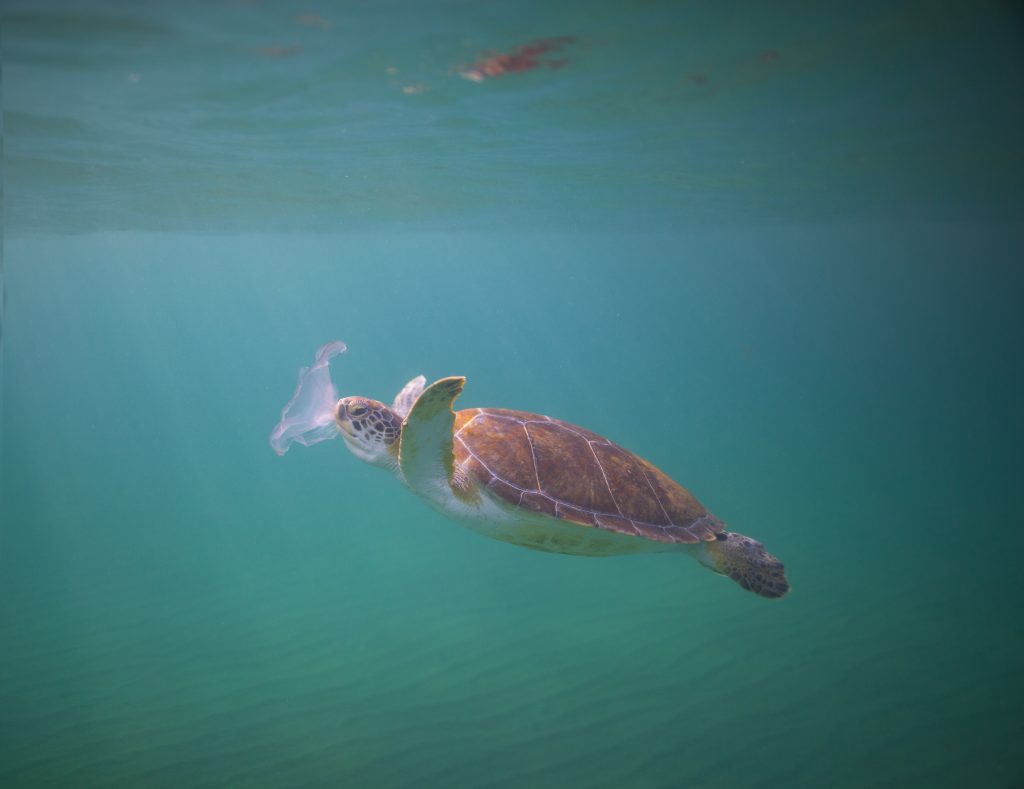
THE OTHER SIDE OF THE PARTY
After the LMC team documented hundreds of deflated balloons on local beaches and treated many turtles that had ingested marine debris, they developed and began implementing
their Balloon Ban conservation project in 2016. Since then, they have partnered with communities in four Florida counties covering 130 miles of coastline.
As of September 1, 2017, LMC and Palm Beach Country’s partnership prohibits the use of balloons at 11 county-operated beachfront parks, including those in Jupiter, Gulfstream, Juno Beach, Ocean Ridge, Riviera Beach and Boca Raton.
The deflated balloons resemble jellyfish, which is a common food for the sea turtles, making it attractive for the sea turtles to eat. The LMC hopes to reduce marine debris, and save turtles’ lives by banning the use of balloons in town beaches, parks, hotels, fishing charters, etc.
“Partnerships and collaboration with outside groups is so critical for conservation,” Fox said. “It’s everyone’s responsibility to protect our environment so we can keep our species.”
Solution: Yes, balloons are fun and a great addition to any party, so just reserve balloon use to indoors. Omit them from your beach or park parties, and opt for more ocean-friendly decorations. Piñatas are super fun and there is never any candy left behind, and chalk is also a great idea for decorating the walkway leading up to a party.
Long story short, small steps do make a great impact. The idea of ocean conservation can be an “out of sight, out of mind” issue for a lot of people when you’re not directly faced with boating through a trash island, or seeing a sea turtle ingest a balloon and have to go to the hospital. Being aware is half the battle, so just start there.
“If you’re walking the beach and see trash, pick it up. Or even just join a beach cleanup near you,” Deadman said. “Just be mindful, clean up after yourself, and encourage others to do the same.”
Maybe if we all take proactive measures to reduce waste, we will be able to reduce the impending 2050 waste to marine life timeline, and enjoy the beaches and marine life that we love so much.
We appreciate you, the reader, in doing your part along with helping to spread the word of this cause.
10 Surprising Facts About Ocean Pollution
1. 70 percent of the oxygen we breathe is produced by marine plants.
2. 36 percent of oil entering the ocean is from land run-off via drains and rivers.
3. Plastic is the number one source of pollution in the ocean.
4. It takes plastic an average of 450 years to degrade in water.
5. Each year, pollution kills more than one million seabirds, 300,000 dolphins and porpoises, and 100,000 sea mammals.
6. In the Paci c Ocean, there is an island of garbage twice the size of Texas, making it the largest oceanic garbage site in the entire world. There, the number of floating plastic pieces outnumber total marine life six to one.
7. Oil is the fastest source of deterioration to the ocean – far more than trash and waste – because it essentially changes the entire ecosystem of the affected area.
8. Animals at the top of the food chain have contamination levels of millions times higher than the water in which they live as a result of feeding on the smaller animals that absorb the chemicals as part of their food.
9. Chemicals found in polluted water can contaminate water supplies and food chains, creating hormonal imbalances, reproductive problems, nervous system and kidney damage to humans.
10. Up until the 1970’s, chemicals and garbage, including pesticides and radioactive waste, were deliberately dumped into our oceans, assuming they would dissolve to safe levels.
